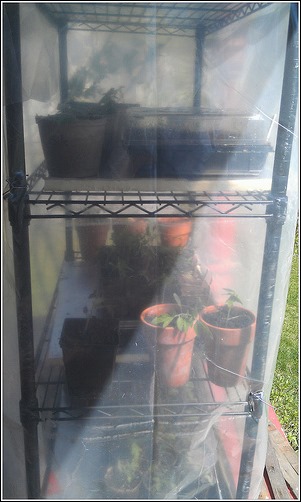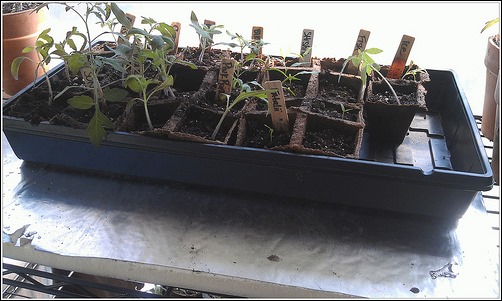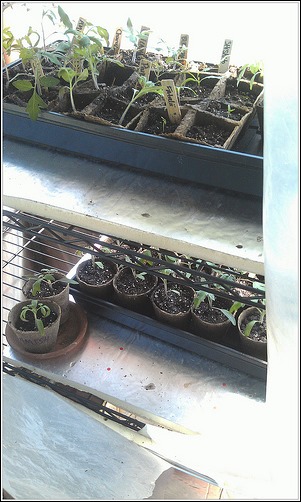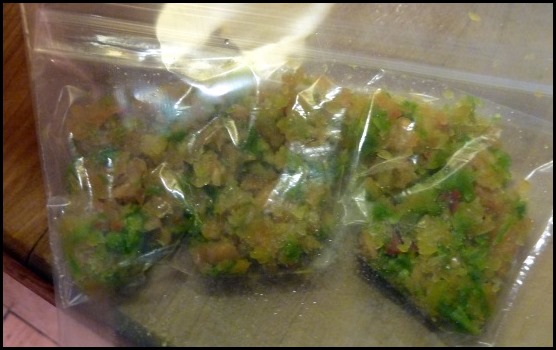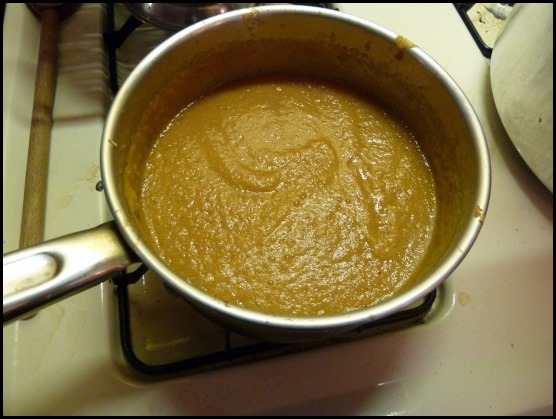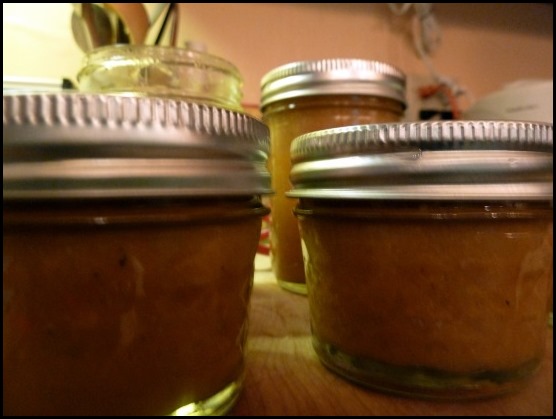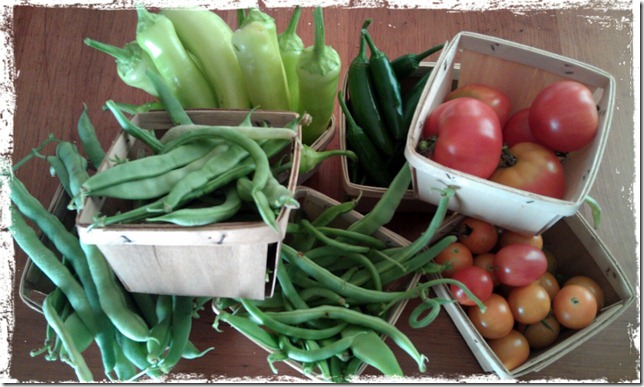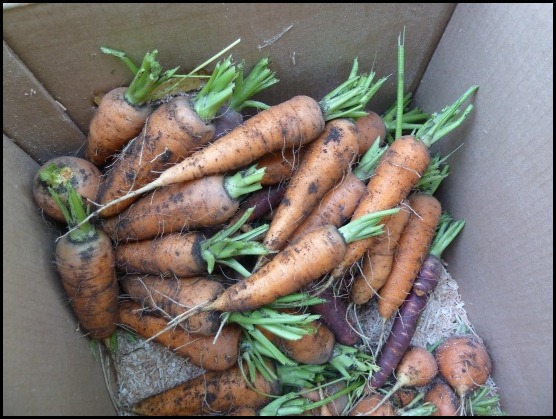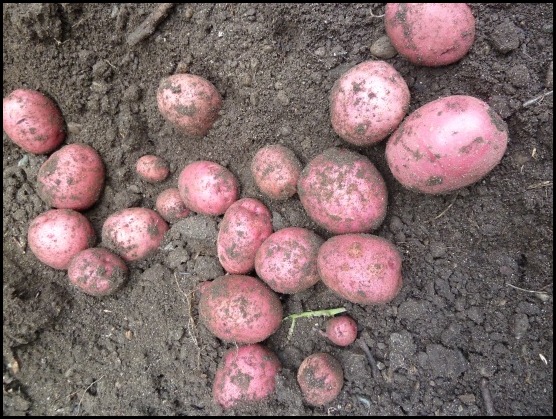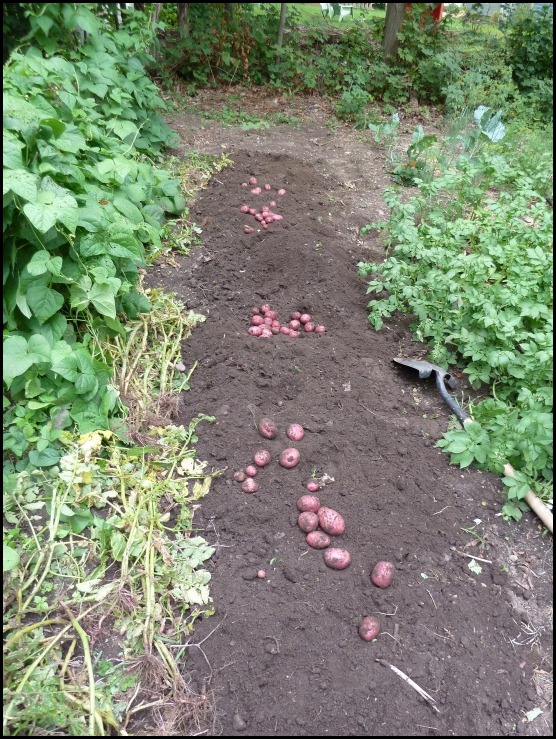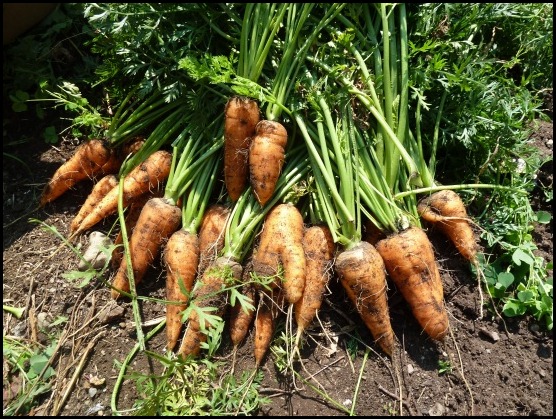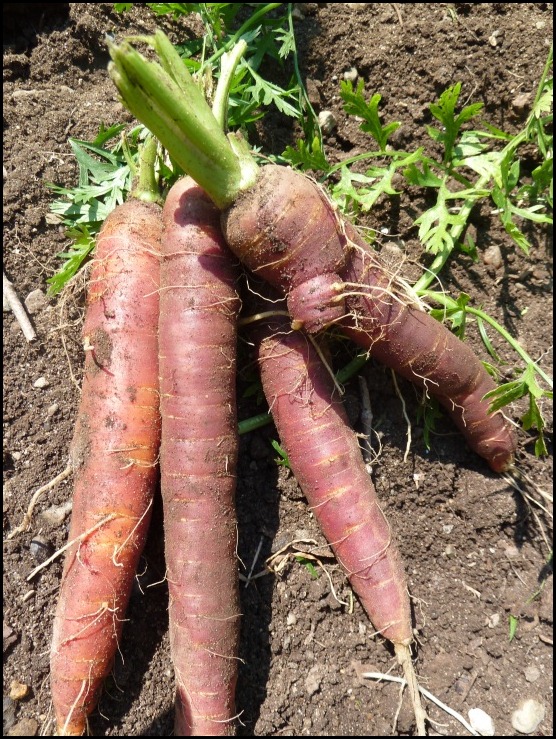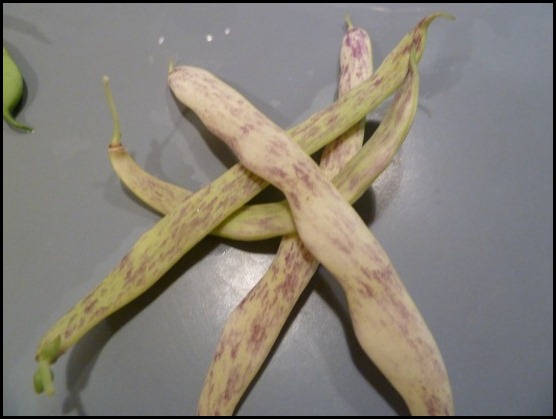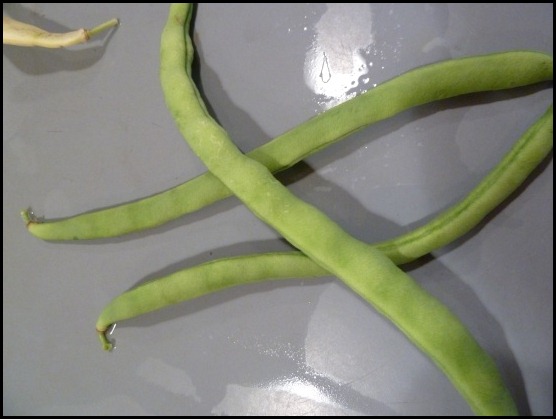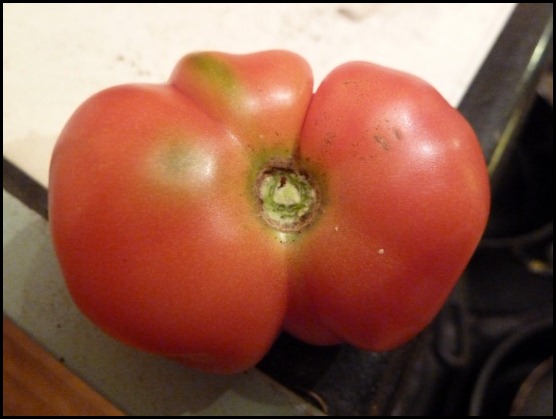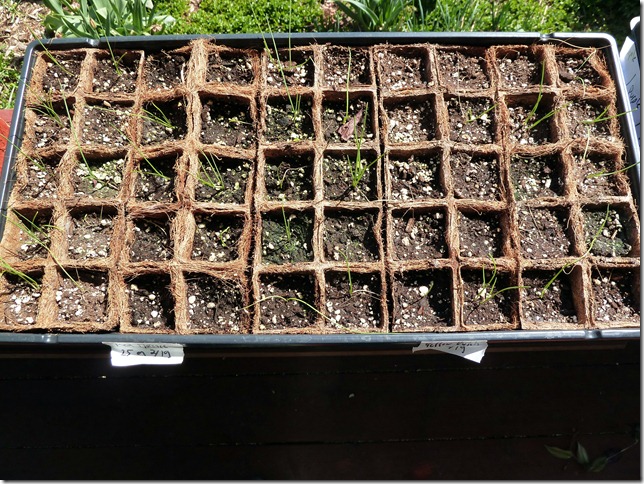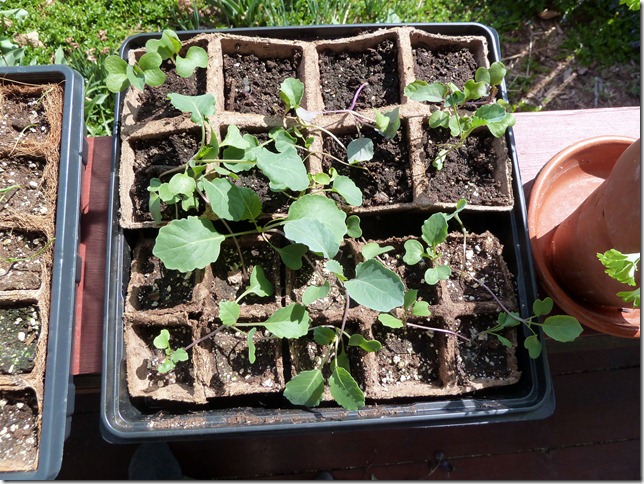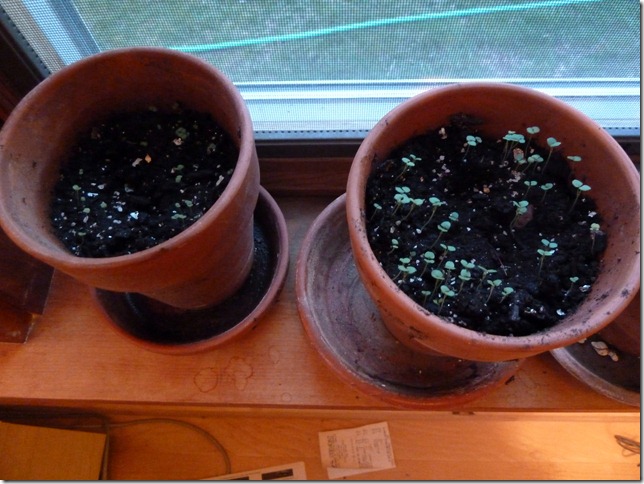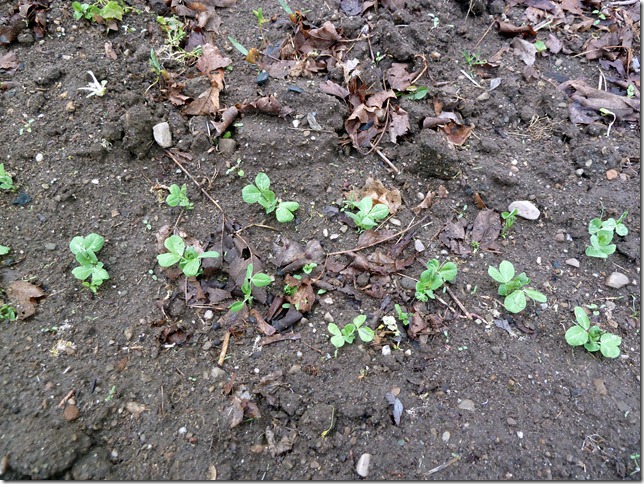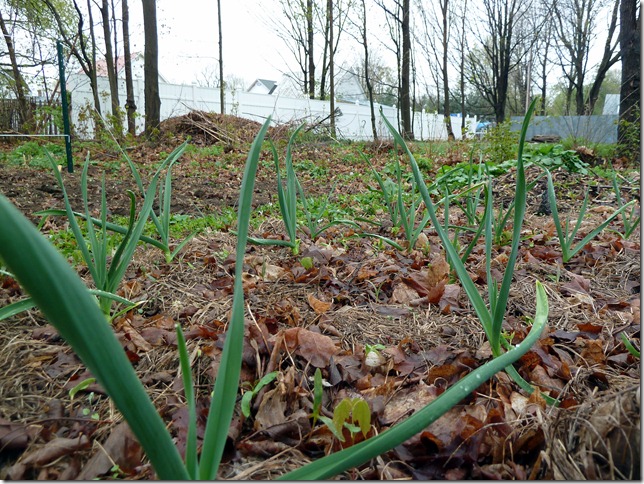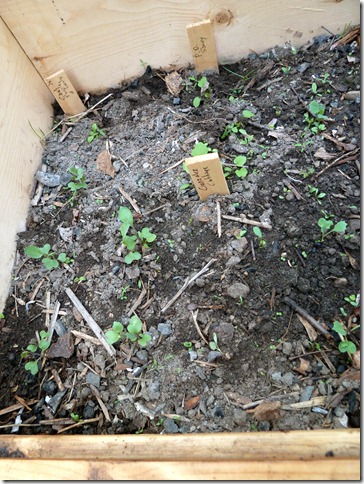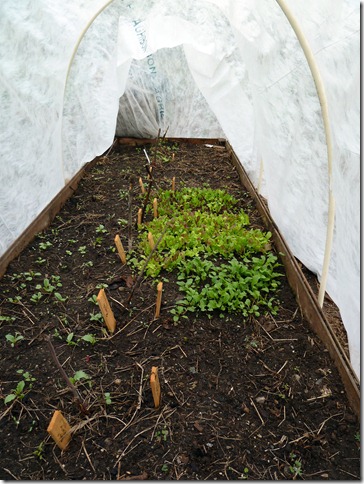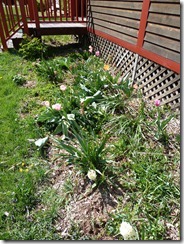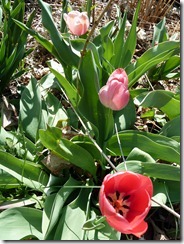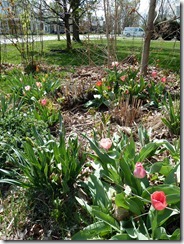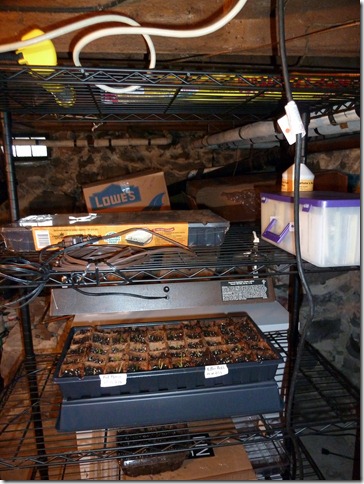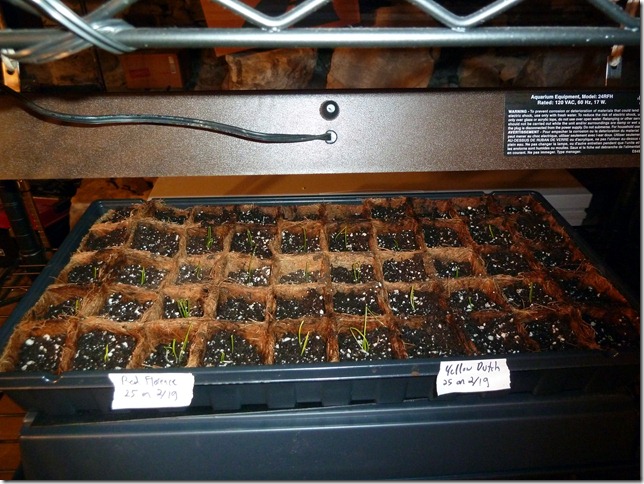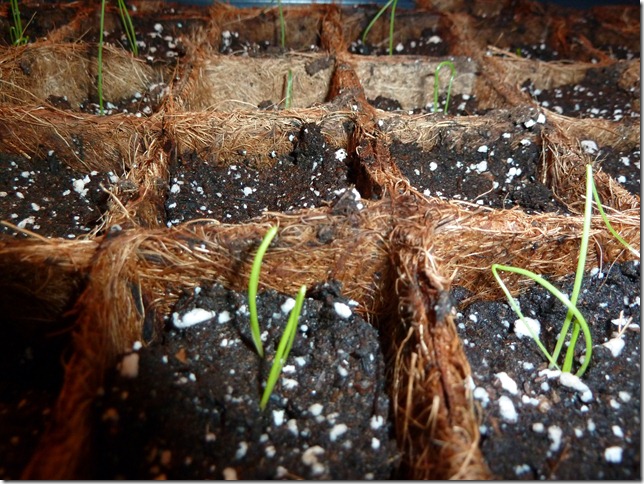Last year I was looking around for a small greenhouse I could use for seed starts and hardening off plants. There are a number of small ones with a few shelves and a plastic cover. When I saw how simple they were, I didn’t see the point in spending the money.
We already had a few of the wire rack shelving units that you can buy at a lot of places like garden/home supply stores, Target, etc. I was already using one to start seeds in the basement, so I knew the general layout would work. So I just bought some greenhouse plastic and basically wrapped one of those racks. I fastened the plastic to the rack using wire along the vertical supports. The plastic is thick enough to hold for the most part, although obviously it tears a bit over time. It doesn’t have a nice zippered front on it, but other than that it’s the same principle and costs a lot less.
I used it a bit last year, but did have some issues with wind on our front porch. This year I have a sandbag on the bottom rack and some clothesline fastening it to the porch railings. That seems to do the trick as we’ve had some pretty good wind storms since I put it up this spring. So far so good.
It’s working really well to start cold hardy plants and I’m also hardening off other plants that I’m starting in the cellar. It gets nice and warm in there and doesn’t seem to dry out too fast. The other trick I added this year is some foil covered insulation board to reflect more light from under the starting trays. I’m also doing this in my basement underneath the heated seed starting mats I have and it seems to make a real difference.

